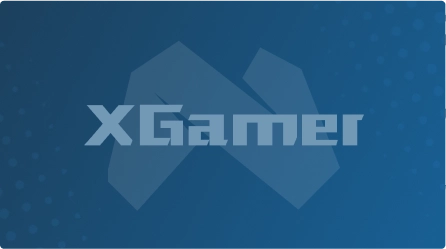
Review: Dogpile Is Full of Good Dogs
Dogpile is a Suika Game like puzzle, which isn’t uncommon as of late, but it’s one of the most intriguing due to its deck-building nature and implementation of roguelike elements. While there is a barebones, straightforward sort approach that just involves matching dogs, the real fun comes from playing around with your deck, dogs’ traits, and other elements to keep successfully adding more pups to your yard.
In Dogpile , you start with a yard and no dogs. Which is no good. You need puppers in your life! Fortunately, there are small and big ones, ranging from a score of a teeny lil’ dude at a “1” or a big ol’ buddy that is a “King.” Each hand deals you three cards you must play, which could be dogs, trainer ones that affect the dogs, or a pet store for a shopping visit. (Depending on the tags on your collar and traits, you might draw more than three.) Your goal is to keep hitting bone objectives through merging dogs to get bigger ones, to meet objectives and get to go to the dog wash for perks, while also earning money you can spend at the pet shop for more dog cards, trainer cards, and tags with perks. It’s all incredibly clever, coupled with an amusing “script” that features great descriptions for items and a personable flea as a “guide.”
https://www.youtube.com/watch?v=3nypRrTHPCE
At its heart, Dogpile is a matching game like Suika Game , since we have the well in the center of the screen and the different sized animals that merge with identical pairs of themselves to create a bigger one, continuing to merge them until they can get no bigger. But it’s the implementation of the deck-building elements and sorts of traits found in roguelikes that makes it feel like we have more decisive and strategic control over things. For example, the dog wash allows us to grant one of three traits to three dogs from our deck. Maybe we go with an upgrade that improves all of them by one level? Perhaps we make them all teenier than they were before. We could also always go with making them friendly, which I love because it then automatically makes them rush over in the yard to pair up with their match.
While there are good traits like the ones I mentioned, such as making them extra good to get more currency or a pack trait that will automatically also use another dog card from your deck and deploy it, there are negative traits too. Timid will make them run away from other dogs. If one is fostered, it becomes a single-use card. A dog could end up temporarily crated, which makes it unable to match for a number of hands. And if a dog has fleas, none of its positive traits will come in. A royal dog is opposite of a miniature one, as it will be bigger than usual. Not to mention missing bone criteria via matching will mean incurring a punishment like temporary crating, fleas, or adding a rock to the yard. It makes you think about your decisions and consider adding more trainer cards like a sponge that could wash negative traits off a dog in the yard, sheers to make one in the yard miniature, or a treat to make a specific one extra good.
Images via Studio Folly, Toot Games, Foot
The tags are also great. You’re limited to a certain number on your collar, and these are exclusively purchased in the pet shop. These can give you things like more bones or more money for certain actions, ensuring a certain option always appears at the dog wash, automatically assign traits to certain classes of dogs, and other bonuses for playing in certain ways if equipped. While we can only hold a certain number on our collar at a time, they can be sold back for funds and to make room for more. It’s almost like they’re relics like in typical roguelikes or deck-builders, offering a reason and excuse to tailor our deck and playstyle to a certain situation.
Dogpile also deviates from Suika Game to behave more like Balatro with its varied decks. If you “beat” a game by getting the Saint Bernard (King), you can unlock a new deck. These could change the difficulty of a run, depending on the situation. I also noticed that, while no new dogs appeared, I did sometimes see new tags after getting more decks.
Images via Studio Folly, Toot Games, Foot
Dogpile combines the Suika Game formula with deck-building, and I really like the results. It’s quite clever and incredibly cute. I loved playing around with certain builds and trying to capitalize on putting together decks that involved certain mechanics. Did I see myself getting near the endgame? Eliminate all smaller dogs to prioritize minimized versions of larger ones in the deck! Did I want to make things easier for myself and not worry about placements? Try and add friendly and pack traits to as many dogs as possible. I really loved challenging myself and working things out.
Dogpile is available for PCs.
The post Review: Dogpile Is Full of Good Dogs appeared first on Siliconera .
 Popular Content
Popular Content Explore Topic
Explore Topic



